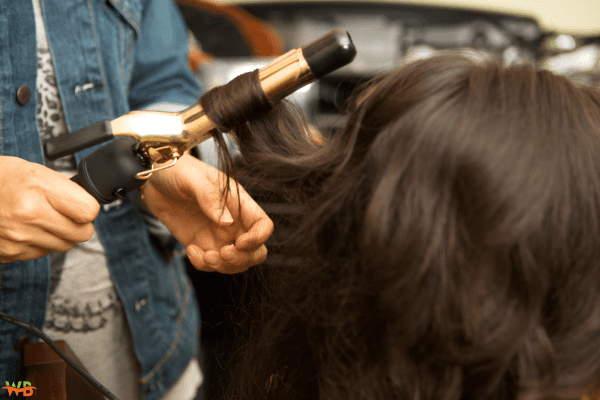Hair dye has been a part of human culture for thousands of years, offering a way to express individuality, cover grays, or simply try out a new look. With advances in technology and a growing interest in personal aesthetics, the industry has flourished, offering a myriad of options for anyone looking to change their hair color. This article explores the history, types, and considerations to help you make an informed choice.
A Brief History of Hair Dye
Hair dyeing is not a modern phenomenon. Ancient civilizations like the Egyptians, Greeks, and Romans used natural dyes from plants, minerals, and insects to change their hair color. Henna, derived from the Lawsonia inermis plant, has been used for over 5,000 years, particularly in Middle Eastern and South Asian cultures. The modern era of hair coloring began in the 19th century with the discovery of para-phenylenediamine (PPD), a chemical still widely used today. The 20th century saw the rise of commercial Hair Dye products, making hair color more accessible and varied than ever before.
Types of Hair Dye
There are several types of hair dye, each with its own characteristics and uses:
- Permanent Hair Dye: This type of dye penetrates the hair shaft and offers long-lasting color. It typically contains ammonia and hydrogen peroxide, which open up the hair cuticle to allow the dye to enter. Permanent dyes are excellent for covering gray hair and achieving a drastic color change.
- Semi-Permanent Hair Dye: These dyes coat the surface of the hair and gradually fade over time, usually after about 6-12 washes. They do not contain ammonia or peroxide, making them less damaging to the hair. Semi-permanent dyes are ideal for those who want a temporary change or are trying out a new color.
- Demi-Permanent Hair Dye: A middle ground between permanent and semi-permanent, demi-permanent dyes penetrate the hair shaft slightly but do not lift the natural color. They last longer than semi-permanent dyes, typically around 20-28 washes, and are less harsh than permanent dyes.
- Temporary Hair Dye: These dyes coat the hair surface and wash out after one or two shampoos. They are perfect for special occasions or for those who want to experiment with bold, unconventional colors without commitment.
Choosing the Right Hair Dye
While choosing a hair dye, think about the accompanying variables:
- Hair Condition: Assess the health of your hair. Damaged or dry hair may react differently to dye, potentially resulting in uneven color or further damage. If your hair is compromised, consider a gentler option like semi-permanent dye.
- Skin Tone: Your natural skin tone can affect how a hair color looks on you. Warm skin tones generally suit golden, auburn, or honey shades, while cool skin tones often look best with ashy, platinum, or jet-black hues.
- Lifestyle: Think about your daily routine and how much maintenance you’re willing to commit to. Permanent dyes require touch-ups as your hair grows, while temporary dyes can offer a low-maintenance alternative.
- Allergies: Always perform a patch test before using a new product, as some ingredients, especially PPD, can cause allergic reactions.
The Dyeing Process
The process of dyeing hair involves several steps:
- Preparation: Start with clean, dry hair. Protect your clothing and skin with a towel or cape, and apply a barrier cream around your hairline to prevent staining.
- Mixing: Follow the instructions on the dye package carefully. Mix the dye components in the provided applicator bottle or bowl.
- Application: Section your hair and apply the dye evenly, starting from the roots and working towards the ends. Ensure full coverage for a uniform result.
- Processing: Permit the color to process for the suggested time. Avoid using heat unless specified, as it can alter the results.
- Rinsing: Wash your hair completely with tepid water until the water runs clear. Follow up with the included conditioner to lock in the color and hydrate your hair.
Aftercare Tips
Proper aftercare can extend the life of your hair color and keep your hair healthy:
- Use Color-Safe Products: Invest in shampoos and conditioners formulated for color-treated hair to prevent fading and dryness.
- Limit Heat Styling: Excessive heat can damage dyed hair. Use heat-styling instruments sparingly and consistently apply an intensity protectant.
- Avoid Frequent Washing: Washing your hair time after time can strip away the color. Aim to wash your hair 2-3 times a week, and use dry shampoo in between if needed.
Conclusion
It offers a versatile and exciting way to change up your look. Whether you’re covering grays, trying a bold new color, or simply enhancing your natural shade, understanding the different types of hair dye and their applications can help you achieve the best results. With the right preparation and aftercare, you can enjoy vibrant, healthy-looking hair.

I’m Salman Khayam, founder of Wellbeing Junction. I synthesize trusted information from research and expert guidance to create clear articles across health, wellness, and lifestyle topics.
Disclaimer: Content is for informational purposes only and is not medical advice. Consult a qualified expert regarding personal health or specialized questions.
Discover more from Wellbeing Junction
Subscribe to get the latest posts sent to your email.




